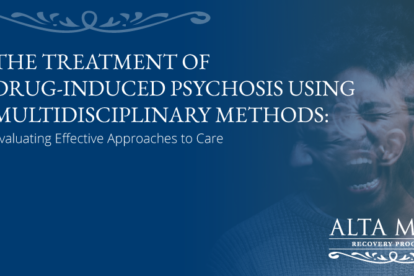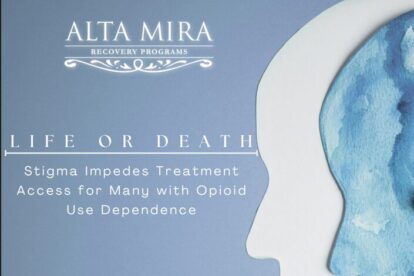Managing Your Panic Disorder While Kicking Your Prescription Xanax Addiction

Given the high addiction potential of many of the medications typically used to control anxiety, individuals with panic disorder can easily fall into a destructive pattern of drug use. Safely tapering off of these drugs requires a medically supervised program and alternative methods to cope with anxiety once the medications are gone. Cognitive behavioral therapy (CBT) and mindfulness meditation are two particularly effective tools that can help clients manage their anxiety in a healthy, positive manner.
Although my family has a history of substance abuse issues, I never thought that the Xanax that I was prescribed for my panic disorder would lead me to the dark place that I eventually found myself in. Taking medically prescribed drugs gave me a false sense of security, and though at first, it gave me great relief from my panic attacks, my dependency on them led me down the path of addiction.
The intense addiction that can come from benzodiazepine use is made even more terrifying by how difficult it is to come off of them. If you struggle with panic disorder, Xanax can provide a great sense of control and help ease the overpowering fear and anxiety that seem to surface out of nowhere, turning the world into a place to fear instead of one to explore and experience. However, these medications can quickly turn into crutches that do more harm than good, creating a new feeling of fear that stems from the realization that living without them is impossible.
After a certain point of tolerance, you may become dependent on Xanax or other benzodiazepines and find it extremely hard to stop using, especially since you have come to hold the belief that these medications are the only way to keep your fear and anxiety in check. Despite the realization that addiction has taken hold, escaping the terror of panic attacks makes all of the short-term memory loss and irritability seem worth it. You understand that you’re addicted and it has become a problem, but compared to a life of being a slave to your panic attacks, you think that it’s worth it.
We're Here to Help. Call Today!
866-922-1350The Crippling Grip of Addiction
Benzodiazepines, such as Xanax, act by increasing the transmission of GABA, the main inhibitory neurotransmitter in the brain, through boosting the efficiency of GABA receptors. After prolonged benzodiazepine use, these receptors become oversaturated and the body’s natural response is to decrease the overall amount being organically created. Abruptly stopping, without giving the brain enough time to restore its production of receptors back to normal, leads to a lack of inhibition in the brain and sends it into overdrive, ultimately leading to a variety of symptoms including anxiety, panic, and tremors—the exact same issues that you were hoping to alleviate when you began taking the medication in the first place.
But if you’re benefiting from the use of Xanax, why stop in the first place? Many people take benzodiazepines to control their panic disorder for years and do not experience terrifying withdrawals. However, these individuals limit their usage and avoid causing drastic increases in tolerance. The problem begins when your pattern of usage becomes more frequent and you find yourself having anxiety that stems from the medication. For example, you get anxious when you forget your prescription at home, which creates fear and can stimulate a panic attack. Getting caught in this vicious cycle is the first sign that you might be developing an addiction to your prescription and no longer benefitting from it.
Tapering off of benzodiazepines requires close attention to dosage—reducing your dosage too fast can lead to an increase in the aforementioned withdrawal symptoms. Many people unaware of the dangers of benzodiazepine withdrawal decide to go cold turkey without professional guidance and end up having life-threatening seizures. The intensity and severity of this withdrawal process are what push so many to relapse, and particularly for those with panic disorder, the severity of these symptoms makes staying on medication seem like the safest route to take.
After years of reliance on Xanax, the first months tapering off of it on my own were a nightmare. I felt naked to the world and completely vulnerable to every fear and anxiety that went through my mind. Breaking free from its clutches was extremely difficult, but with the right support system, I was able to realize that I had more strength than I thought.
Working Towards a Healthier Alternative
Despite the benefits of benzodiazepines, such as Xanax, for your panic disorder, once you have fallen into addiction, you have passed the point of this method of treatment being beneficial. Breaking free from its grip is a difficult process, but you can learn to cope with anxiety in a different manner—something that many in the throes of addiction consider to be a scary thought. Luckily, there are alternative treatments available that can help clients manage their panic disorder and learn to control their fears, while at the same time pulling themselves out of their addiction in a safe, comfortable environment.
Cognitive Behavioral Therapy
Cognitive behavioral therapy (CBT) is a form of psychotherapy that is used to treat various mental illnesses by guiding individuals to identify negative thought patterns and to reconcile their maladaptive ways of perceiving the world. For those with panic disorder, CBT typically involves helping clients become aware of the cycle of fear and anxiety by understanding that during panic attacks, the fears that stimulate anxious sensations are the products of distorted beliefs. One study revealed that CBT decreased the amount of fear, panic, anxiety, and depression experienced by those suffering from panic disorder, and all patients in that study no longer experienced spontaneous panic attacks following treatment.
Mindfulness Meditation
Mindfulness meditation is a technique that places emphasis on acknowledging distracting feelings and thoughts as opposed to ignoring them. In the case of individuals suffering from panic disorder, this technique can help in the confrontation of the anxiety and fear that lead to panic attacks. In a study of patients with either anxiety or panic disorder, researchers found that group training programs in mindfulness meditation can not only reduce symptoms of anxiety and panic, but also help to maintain these reductions in the time period following treatment, highlighting its potential for the long-term treatment of panic disorder.
Hope is Just a Phone Call Away
866-922-1350Dual Diagnosis Treatment
Addiction to benzodiazepines is enough to handle on its own, but trying to also manage the anxiety that was at the root of the addiction can make getting clean seem like a dream that will never come true. Residential treatment centers offer a range of treatment modalities, including those mentioned above, to help you get started on a proper tapering program that allows your body to detox with minimal side effects. At the same time, therapists will conduct a comprehensive assessment and treat the root of your panic disorder.
Living with the fear that crippling anxiety could rear its ugly head at every corner can be so much more debilitating when you feel that the only way to face it is through the use of medication. With the right treatment plan, you can take hold of your addiction and learn to face your anxieties in a way that helps you better understand their root cause and, as a result, live a more positive life.
Alta Mira offers a comprehensive addiction rehabilitation program for those with a dual diagnosis of substance use disorder and panic disorder who are looking to free themselves from the grip of benzodiazepine addiction. If you or a loved one needs more information on how to manage these two disorders concurrently, contact us today to learn more about our unique dual diagnosis programs.






